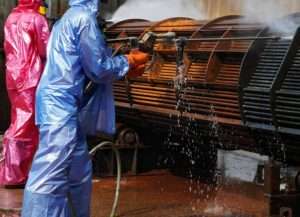В каком банке депозит выше
Хотите, чтобы ваши сбережения работали на вас? Узнайте, в каком банке депозит выше и как выбрать самый выгодный вклад! Сравнение процентных ставок и условий.
Выбор банка для открытия депозита – задача, требующая внимательного анализа и сравнения предложений. Стремление получить максимальную выгоду от своих сбережений вполне естественно, и ключевым фактором здесь является процентная ставка. Однако, просто найти, в каком банке депозит выше, недостаточно. Важно учитывать надежность финансового учреждения, условия досрочного снятия средств и другие факторы, которые могут повлиять на итоговую доходность. Правильный выбор поможет не только сохранить, но и приумножить ваши средства.
Основные факторы, влияющие на выбор банка для депозита
При выборе банка для открытия депозита необходимо учитывать несколько важных факторов, помимо процентной ставки. Эти факторы помогут вам сделать осознанный выбор и получить максимальную выгоду от своих сбережений;
Надежность банка
Прежде всего, необходимо убедиться в надежности банка. Изучите его кредитный рейтинг, отзывы клиентов и финансовые показатели. Надежный банк обеспечит сохранность ваших средств и выплату процентов в срок.
Условия депозита
- Процентная ставка: Один из ключевых факторов, определяющих доходность депозита.
- Срок депозита: Влияет на процентную ставку и доступность средств.
- Возможность пополнения и частичного снятия: Определяет гибкость депозита.
- Капитализация процентов: Увеличивает доходность за счет начисления процентов на проценты.
Сравнение предложений разных банков
Чтобы определить, в каком банке депозит выше, необходимо сравнить предложения разных банков. Для этого можно использовать специализированные онлайн-сервисы и сайты, которые позволяют сравнивать условия депозитов различных финансовых учреждений.
Пример сравнительной таблицы:
| Банк | Процентная ставка (годовых) | Срок депозита (месяцев) | Минимальная сумма |
|---|---|---|---|
| Банк А | 7.5% | 12 | 50,000 руб. |
| Банк Б | 7.0% | 12 | 100,000 руб. |
| Банк В | 8.0% | 6 | 30,000 руб. |
Важно помнить: Процентные ставки могут меняться, поэтому перед открытием депозита необходимо уточнять актуальную информацию в банке.
При выборе банка для депозита, важно учитывать не только процентную ставку, но и другие факторы, такие как надежность банка, условия депозита и ваши личные финансовые цели. Тщательный анализ и сравнение предложений помогут вам сделать правильный выбор и получить максимальную выгоду от ваших сбережений.
Найти, в каком банке депозит выше – это только первый шаг. Далее следует внимательно изучить условия договора и убедиться, что они соответствуют вашим потребностям и возможностям. Не стесняйтесь задавать вопросы сотрудникам банка и уточнять все непонятные моменты. Грамотный подход к выбору депозита позволит вам не только сохранить, но и приумножить свои сбережения.
Но достаточно ли просто гнаться за самой высокой процентной ставкой? Не стоит ли обратить внимание на банки, предлагающие более скромные проценты, но с более гибкими условиями, например, возможностью частичного снятия без потери начисленных процентов? Ведь ситуация в жизни может измениться, и срочно понадобившиеся средства могут оказаться недоступными из-за жестких условий депозитного договора. А как насчет налогообложения доходов от депозитов? Учитываете ли вы этот аспект при расчете итоговой доходности? Ведь налоги могут существенно «съесть» часть прибыли, и тогда привлекательность депозита с высокой ставкой может оказаться не такой уж и очевидной. Не забываете ли вы про страхование вкладов? Уверены ли вы, что выбранный вами банк является участником системы страхования вкладов, которая гарантирует возврат ваших средств в случае банкротства банка? И, наконец, рассматриваете ли вы альтернативные варианты инвестирования, которые могут принести более высокую доходность, пусть и с большим риском?
А может, стоит присмотреться к банкам, которые предлагают не только высокую процентную ставку, но и дополнительные бонусы и привилегии для своих вкладчиков? Например, повышенный кэшбэк на определенные категории покупок или льготные условия кредитования? Ведь эти мелочи могут в конечном итоге значительно увеличить вашу выгоду от депозита. Или, может быть, стоит рассмотреть возможность диверсификации своих сбережений и разделить их между несколькими банками, чтобы снизить риски и получить доступ к более широкому спектру предложений? А что, если вместо традиционного депозита рассмотреть возможность открытия накопительного счета, который предлагает большую гибкость и позволяет свободно пополнять и снимать средства без потери процентов? Не упускаете ли вы из виду сезонные предложения и акции, которые банки регулярно проводят, чтобы привлечь новых клиентов и предложить более выгодные условия по депозитам? Ведь, порой, можно найти действительно выгодное предложение, которое позволит вам значительно увеличить свою доходность. Рассматриваете ли вы возможность открытия депозита в другой валюте, чтобы защитить свои сбережения от инфляции и колебаний курса рубля? Но при этом учитываете ли вы валютные риски и потенциальные потери при конвертации валюты? И, наконец, не забываете ли вы проконсультироваться с финансовым консультантом, который поможет вам оценить все риски и возможности и выбрать наиболее подходящий вариант для вашего конкретного случая?





